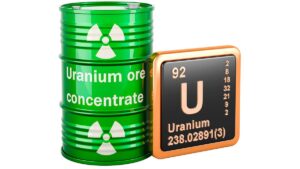Monsters of Rock: Russia sent Australian met coal prices soaring, now they’re being pulled back to the pack

Pic: Image Source via Getty Images
- Australian met coal spot prices fell more than US$200 in the June quarter and could slip further amid weak steel demand
- India and China have been buying up Russian coal amid massive discounts for its PCI: S&P
- Miners and energy stocks hammered as BHP and Rio Tinto fall to seven month lows
Australian met coal prices fell a massive US$213/t over the June quarter as the confluence of factors that drove them to more than US$600/t immediately after Russia’s invasion of Ukraine unwind in unusual and unexpected ways.
It should be said S&P Global Platts’ prices for Australian premium low vol coking coal remained extraordinarily high at June 30, with the US$302/t ($444.68/t AUD) spot price nearly $150 above the highest royalty bracket introduced in controversial changes by the Queensland Government last month.
But they have been trending down consistently as steel demand recedes, with Chinese prices again moving to a premium (down US$46.25/t to US$394/t).
Some of the factors driving the fall in prices, which have seen met coal unusually trade below prices for thermal coal in recent weeks, are related to demand.
“The price downtrend that dominated the seaborne metallurgical coal market in the second quarter looks set to extend into Q3, with construction activity expected to slow down in both China and India in coming weeks due to the rainy season,” S&P analysts say.
“However, prices also have the potential to remain highly volatile as western countries mull further sanctions on Russia and China grapples with how to revitalize its economy in the wake of COVID-19 lockdowns.”
That’s not all
But another factor is the massive discounts for Russian coal.
It can’t be moved to markets like Europe, Japan, Korea and Taiwan at the moment and international banks are closely watching transactions to Russian companies.
But Indian and Chinese buyers have had no such qualms.
China hasn’t accepted Aussie stuff since October 2020, and recently cleared the last of its backlog of our coal out of storage, and Russian met coal has filled a void. Its purchases of Russian met coal rose 89% year on year to a record 3.42Mt in April and May.
India meanwhile has lifted its imports of Russian PCI 220% to 1.06Mt in April and May, lifting Russia’s share of imports to our Quad partner from 30 to 44% in a year.
Australian PCI buying by Indian steelmakers has dropped, S&P says.
“Consequently, some Indian buyers were heard to have reduced Australian PCI term contractual volumes in 2022 amid increased Russian supply.”
So much for diplomacy.
Going forward Chinese steel mills will be a major factor to look out for. While China isn’t buying our coal its purchasing has a big flow on effect given it remains comfortably the largest steel producer in the world.
Chinese factories were estimated to be losing US$70 on every tonne of rebar and hot rolled coil they were producing on June 30, hitting prices of raw materials like iron ore, scrap steel, coke and coal.
Devastating day for miners and energy stocks
BHP (ASX:BHP) suffered a 5.6% loss to drop to its lowest ebb since November as iron ore futures tanked on word of more Covid-19 cases in Shanghai.
No matter how well the rest of the ASX does a fall of that magnitude by BHP, which comprises more than 1 tenth of the market cap in the ASX 200, is always going to send it into the red.
Of course other mining and energy stocks were no better, with materials tumbling 4.91% and energy off 5.7% as previously hot commodities like oil, copper and gold came off the boil.
Rio Tinto (ASX:RIO) was even worse off than BHP, falling 7.35% to its own 7 month low.
South32 (ASX:S32), which mines a host of commodities subject to big price falls overnight including copper, zinc and coal, lost 8.31% of its value while energy majors Santos (ASX:STO) and Woodside (ASX:WDS) similarly lost their groove.
Monsters share price today:
UNLOCK INSIGHTS
Discover the untold stories of emerging ASX stocks.
Daily news and expert analysis, it's free to subscribe.
By proceeding, you confirm you understand that we handle personal information in accordance with our Privacy Policy.








